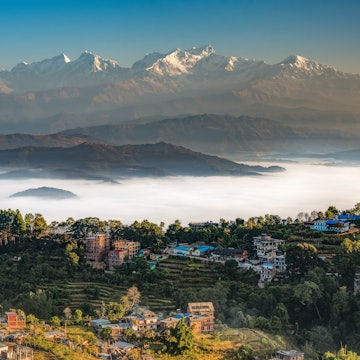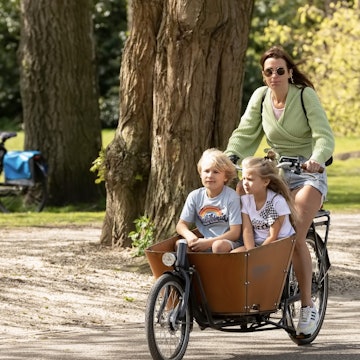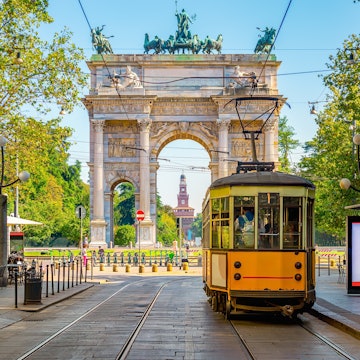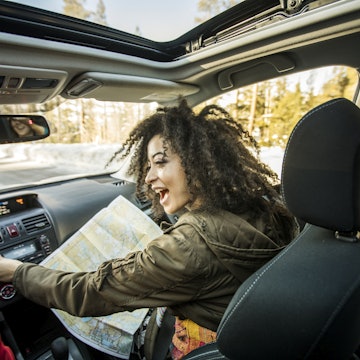

Once a niche, virtual travel is now a necessity. Can it last? © Westend61 / Getty
As countries closed their borders to stop the spread of COVID-19, Maja Campelj and Tina Hudnik did the unthinkable – they traveled around the world.
"We've been to Norway, we really liked Bilbao, and we've been to China," boasts Maja. "We went to Uganda to see the mountain gorillas, which I haven't seen before. Last week, we were immersed in Moldova. This week, we're really looking forward to Mexico."
Maja and Tina, co-founders of the sustainability-focused tour guide academy G-Guides, aren't hopping on planes, mind you – they're traveling from their armchairs.

In March, the Slovenia-based team launched a new digital course tackling the travel industry's final frontier – virtual tours. The five-day course, certified by the World Federation of Tourist Guide Associations, has attracted students from over 50 countries around the globe, and "the numbers are just increasing," Tina beams. Because of their students' tours, Maja and Tina are circling the world faster than Phileas Fogg in his wildest dreams.
"More people are attending our course because more people realize that virtual tours are here to stay," adds Maja.
With travelers embracing a new normal and tourism professionals preparing for an uncertain future, G-Guides is at the forefront of a global revolution. Virtual tours are quickly becoming the antidote to wanderlust and the answer to questions about how the travel industry can weather the pandemic.
Connecting people around the world
Before the ongoing health crisis upended global tourism, virtual reality (VR) gained traction as both a marketing tool for travel companies and a way to vacation through visually immersive simulations. Platforms like Google Earth VR sprang up to offer virtual escapes 365 days a year, and headsets like the Oculus Rift now provide 360-degree views of the world's most famous sites.

Still, while much of the technology supporting these virtual adventures is groundbreaking, it can't replace the autonomous, all-sensory experience of in-person exploration. There's no way to feel the force of an Icelandic waterfall, smell a field of tulips blooming in the Netherlands, or taste a traditional Mexican torta while staring at a screen. That's why Maja and Tina are training guides to do much more than show sites and regurgitate facts; they're transforming tour guides into what they call “cultural immersion facilitators.”
"We really train them hard on how to transmit the five senses over the screen," notes Maja. But that's not all – through the course at G-Guides, industry professionals learn to create trips that inspire what globetrotters are missing most while stuck at home – personal connection.
"Intercultural communication skills and engaging storytelling – that's what it's all about," says Maja. "It's not about the place - every single place in this world can be exciting if someone can make it exciting." What matters most when a virtual tour ends is that participants "feel like they're connected with someone at the other end."
The virtues of virtual tourism
The benefits of virtual tours extend far beyond the interpersonal. "If we're ready to embrace this change, we have a unique opportunity to make tourism work for the majority of people," says Maja.

For travelers with mobile, visual, or auditory impairments, virtual tours allow them to experience destinations that were once off-limits. For environmentally-focused vagabonds, traveling via technology is a new way to reduce their carbon footprint and avoid flight shaming without forgoing a foreign excursion. When it comes to money and time, the benefits are equally evident. "I'm a busy woman," Maja admits. "I don't have time to go to all these places. If I have a knowledgeable guide who can really immerse me in the culture, I can have an experience in a shorter, cheaper time."
In cities like Amsterdam and Venice, which are usually overwhelmed with sightseers in the summertime, virtual tours may also provide relief. "I think virtual tours will contribute to the dispersion of people around the globe," says Maja. With unparalleled access to a diverse array of people and places, she’s right. The travel industry’s latest pivot may make this a small world after all.
Maja and Tina could talk about virtual tours all day long, but there isn’t much wiggle room in their busy schedules. "In one hour, we're going to St. Petersburg," Tina laughs. Today’s adventures already took them to the United States and China.
Their itinerary might inspire envy, but lucky for us, we're only one click away from a virtual journey all our own.
Want to check out more virtual tours? The Lonely Planet Guides app has over a thousand 360º videos of destinations all over the world.
You might also like:
What I have learned from travelling the world with a wheelchair
These Black hiking groups are changing the outdoors
Why I believe we need to start traveling internationally again














